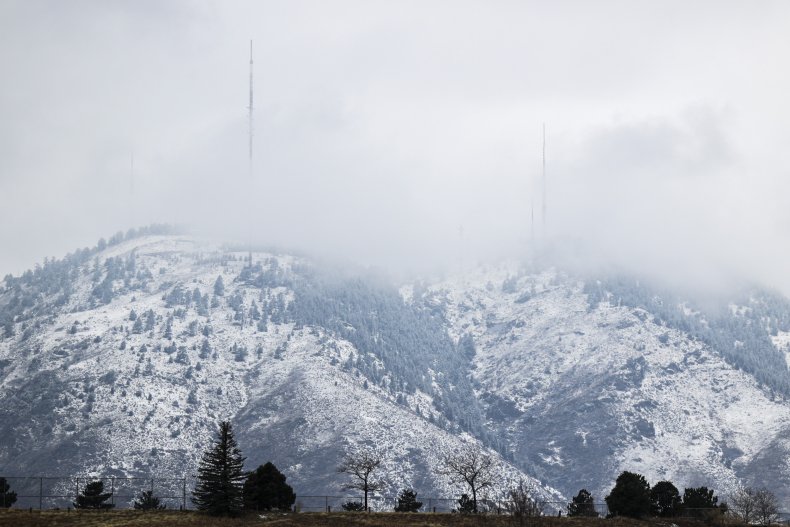Blizzard Reduced Colorado Drought Levels by 17%, Could Ease Summer Wildfires
An extreme winter storm reduced drought levels in Colorado, potentially decreasing the scale of dangerous summer wildfires in the state.
This month brought the fourth largest snowstorm in Denver's history, leading to a 17 percent reduction in drought conditions in some areas of the state east of the Continental Divide. According to the U.S. Drought Monitor, 99 percent of the state was experiencing at least moderate drought levels, and the Front Range, a mountain range in the central portion of the state, had severe or extreme drought before last weekend's winter storm.
Watch the Extreme drought in eastern Colorado get erased. 17.3% reduction in D2-D4 conditions. Not much change west of the Continental Divide #9wx pic.twitter.com/ERj5kh4HRW
— Cory Reppenhagen (@CReppWx) March 18, 2021
Now, an update released Thursday showed that last weekend's blizzard brought some recovery for the state's drought levels, and wetter conditions could mean a reduced risk of wildfires in the warmer months, CBS 4 Denver reported. Major improvement along the eastern side of the state to "abnormally dry" levels means drought recovery from pre-storm levels, but consistent storms are still needed for full drought recovery, according to CBS 4.
The extreme drought conditions were matched by an extreme storm. Not only did the storm bring about 20 inches more snow than normal for mid-March, but the snowfall was extremely wet. Denver saw about 20 percent more inches of liquid precipitation than annual averages, or about 2.88 inches. Areas in the eastern part of the state received at least 6 inches of snow, and more than 3 feet fell in Colorado's foothills.

CBS 4 reported that because droughts take months to develop, dryness across the state will likely persist in the region for months. Specifically, the area west of the Continental Divide remained in the severe or extreme category because it received less snowfall.
The South Platte, Arkansas, and Rio Grande headwaters are back up to average after the big weekend storm #9wx pic.twitter.com/VJyAGvIN74
— Cory Reppenhagen (@CReppWx) March 17, 2021
But the melted snow will account for about 2 to 4 inches of water for more than half of the state, KUSA-TV reported. And this increase of liquid cover could reduce the risk of fires. A resident of the Colorado foothills told KUSA that "we don't need those fires anymore" and that residents who had been "breathing smoke for weeks" may look for some relief this summer after the snowfall.
Wildfires have been more frequent and more severe in Colorado. The Elephant Butte Fire about 30 miles west of Denver caused the evacuation of over 1,000 homes last June. The East Troublesome Fire in October was the fourth biggest fire in Colorado history. The Cameron Peak Fire took over 207,000 acres and became the biggest fire in the state's history last fall.
CBS News reported that Colorado tripled the average burned area in October through the 2010s, and experts attributed runoff and increasingly consistent drought conditions in the state to the increased number of blazes.
Despite higher liquid levels, increased temperatures still pose a risk for fires, CBS News found. Heat waves vaporize water, depriving land of moisture to stimulate soil and vegetation. Last year was the eighth warmest and second driest period for Colorado in June through August.
Colorado lawmakers approved tens of millions of dollars to improve response measures, The Colorado Sun reported. The state has proposed extended contracts for firefighting air tankers and helicopters, as Colorado only has two firefighting aircraft currently.
The Sun said Colorado's wildfire season is about 78 to 84 days longer, compared with the late 1970s and 1980s.
Newsweek reached out the National Weather Service in Boulder, Colorado, for comment but did not receive a reply by publication time.

